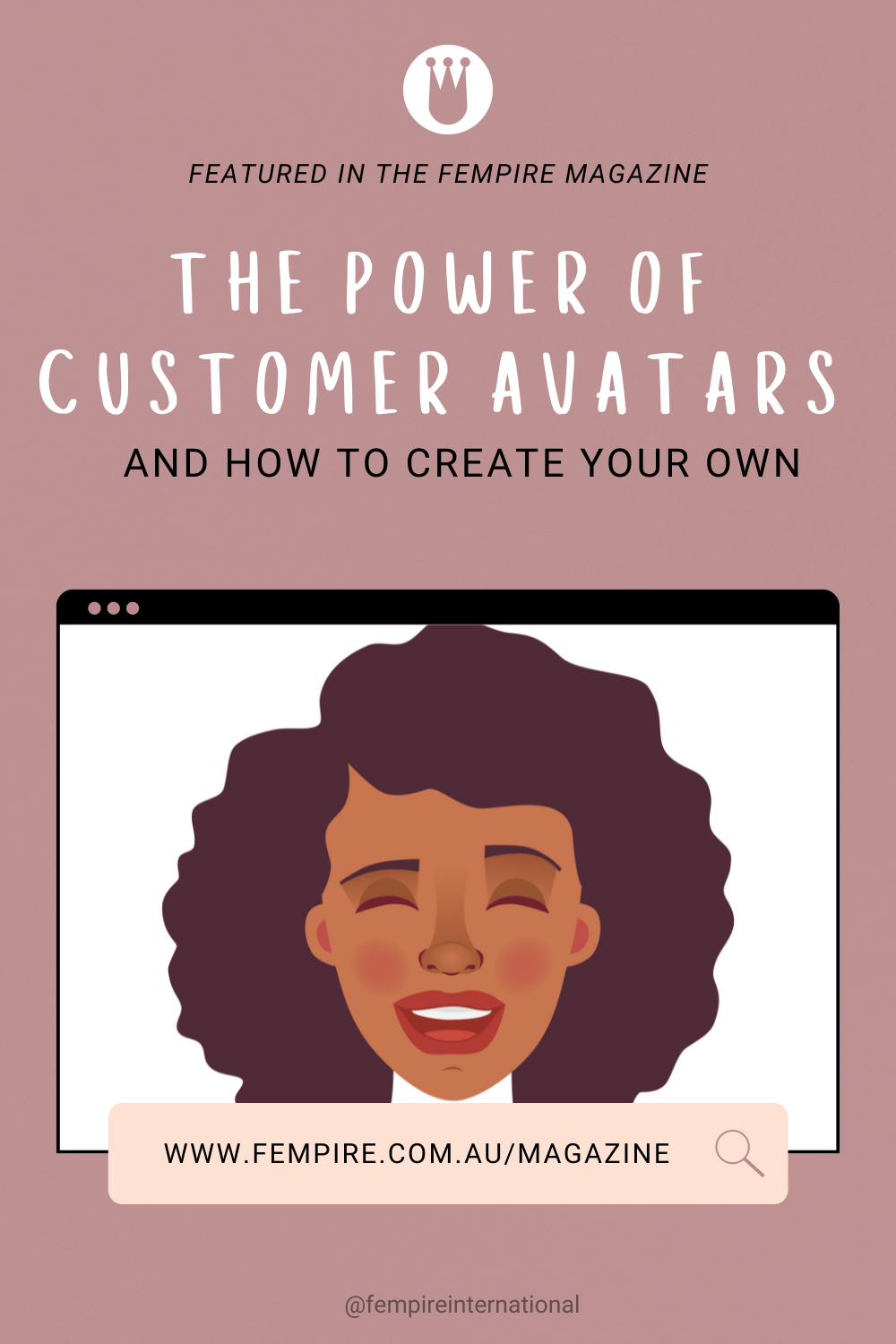Do you jump straight into posting ads, creating social media campaigns, and doing all the fun marketing stuff?
It’s easy to just start marketing without putting much thought into who you are marketing your products to. But if you don’t know who your customer is – how can you market to them?
This is where your Customer Avatar comes into play.
What is a Customer Avatar?
According to DMG, no matter how big or small your business is, you need to have a Customer Avatar.
Why?
Because in order to market your products and services effectively you need to know who your ideal customer is.
In order to market your products and services effectively you need to know who your ideal customer is.
And a Customer Avatar will do that.
It shows you exactly what your target market wants so that you can tailor your messaging to attract those who will benefit most from your services.
Your Customer Avatar is a fictional character that represents the combined characteristics of your target market into one representative portrait. This character has needs and wants, it is a detailed profile of an individual illustrating your target market.
So you will need to spend a bit of time researching and gathering data before creating your customer avatar. It will not be based on guesses or assumptions, and it needs to be more than a short or vague description that lacks depth and important details.
Also often referred to as buyer persona, marketing persona, or a customer profile, your Avatar will help you find your ideal customer.
And not only will it allow you to understand who your ideal customer is but it will also help you connect with your audience and essentially generate more customers for your business.
No matter how big or small your business is, you need to have a Customer Avatar. #smallbusinesstips #businesscoaching Share on XThree Reasons You Need a Customer Avatar
There are a lot of reasons to have a Customer Avatar, but below are what I think are the 3 most important.
Product Development
If you know exactly what your ideal customer wants then you have a better chance of creating or sourcing a product that is personalised and relevant to that target market.
It is important that you hone in on that one specific individual and create a product that will resonate with them.
Content Marketing
What kind of challenges/problems are your target market dealing with? A Customer Avatar will show you this, and it will help you determine how best you can serve them.
By knowing their pain points, you can produce content that will appeal to your target market and provide solutions to their problems.
Enhance User Experience
When you know who your ideal customer is and what they want, you can create an experience that is personalised and perfect for them!
How do I Create my Customer Avatar?
The first thing you need to do before putting your avatar together is some research. This can be previous data from surveys, interviews, marketing campaign results – whatever you want – but it’s not something you can skip out on doing.

If it’s your first time creating a customer avatar, we have an in-depth step-by-step guide in our Fempire Academy. You can learn more about joining the academy here.
However, if you’re just after an overview. Below you can find five simple steps for creating your very own Customer Avatar.
1. Name Your Avatar
It is important to start off by giving your avatar a name. This will help you and your team remember your Customer Avatar so you can easily refer to it – plus it makes it easier to imagine them as a real person. A great way to do this is by giving it a name that you associate with your prospective customers.
You’ll also then need to create a basic profile of the person including their gender, age, relationship status, profession, location, and so on.
And keep in mind that if you target more than one niche or sub-niche you might also need to create multiple customer avatars for each niche.
2. Identify Demographics
You need to create a list of all of the characteristics that your customers share, including psychographics and demographics.
Demographics will help you identify who your customers are, while psychographics will help you understand why they purchase your product or service.
When you are listing demographics, identify individuals based on their gender, age, income, hobbies, occupation status, race, religion, location, etc.
And when identifying psychographics you will need to identify what your target market enjoys, values, and their beliefs.
This is also a great time to take note of what social media platforms your audience uses as it will help you understand which channels you should focus your engagement on.
3. Identify Dreams and Goals
You need to identify what your ideal customers’ dreams and goals are. This will tell you a lot about why they would purchase your product or service. So, take some time to learn what your customer’s short and long-term goals are.
You then need to make a list of the goals that are relevant to what you offer – the problems that your business can solve.
To learn this information you will need to start engaging with you audience. Talk to them and ask them questions e.g. on social media.
4. Identify Challenges
Now that you’ve identified what your customers’ goals are and what they want to achieve, it is now time to identify what kind of challenges they’re going to face.
This is an important step because it will help you figure out how to deal with customer concerns, complaints, and questions.
To do this, you have to ask your customers for their insights.
What do they need help with? Do they need marketing help or advice on how to create great content? Maybe they want some tips on how to increase productivity?
- Create surveys. Ask your customers to complete surveys and use it as feedback and research for your Customer Avatar.
- Take any questions on board. If one customer sends in a question, there are probably at least 10 others with that same question. Your product or service should address these problems, and they can also be part of your customer avatar’s motivations.
- Give your customers a space to provide feedback. Ensure your website has a section where your customers can provide feedback e.g. feedback widgets.
5. Put it All Together, Evaluate & Tweak if Needed
After you’ve taken the time to do all of this, you can put all the information together to create your avatar.
Include things like background information, pivotal life occurrences, what they do on a typical day, their daily struggles, and any frustrations that keep them awake at night.

And keep in mind that creating a customer avatar is an ongoing process.
You may need to create a new one when you launch a new product/service or tweak your current ones as your business grows and changes. You need to identify what your ideal customers’ dreams and goals are.
Customer Avatars are a Marketer’s Bestfriend!
Creating a customer avatar should be on top of your to-do list!
It will not only save you time and money but it will bring you more bang for your bucks in the long run. Your marketing dollars will be spent well when you know who to target and where to advertise your products.
So, get excited about creating your Customer Avatar.
Have fun with it, but do take time to research and gather important data before creating one.
Have you created a customer avatar yet or do you have any of your own tips for creating the best buyer persona? Let us know in the comments xx
____________________________
If you are a business coach and would like the support and guidance of a trusted business coaching brand, head to our website and learn more about how you can become a Certified Fempire Coach today!

Joanna Dutosme is a Marketing Intern at Fempire and a student majoring in Public Relations and Japanese at Curtin University. She aspires to become a fempreneur who eliminates the stigma around women in business and being leaders in the industry. Joanna enjoys reading books about personal growth and finance, in hopes to share her knowledge with others and inspire them to take control of their futures.




0 Comments